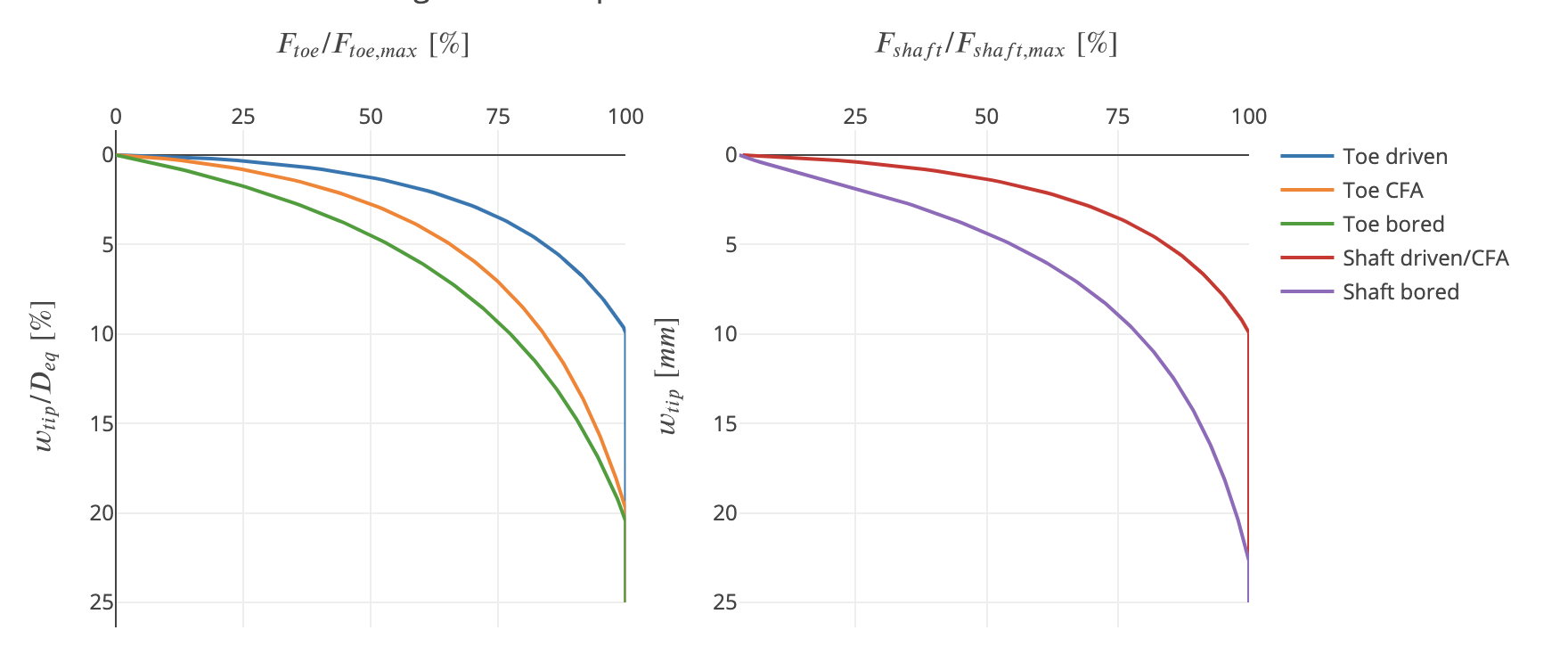Pile settlement¶
- groundhog.deepfoundations.axialresponse.settlement.pile_settlement_curves(diameter, shaft_resistance, base_resistance, pile_type, **kwargs)[source]¶
Calculates the pile settlement curve for pile shaft and pile base from empirical trends established based on axial pile load tests. These curves take into account the pile type (driven, bored or CFA) and the fact that shaft resistance mobilisation distance does not appear to be proportional to the pile diameter, while the base resistance mobilisation distance is. The empirical curves are approximated by a mathematical relation. The function returns both the normalised and denormalised curves. Not that the function returns the pile settlement in m which the empirical shaft mobilisation curves mention mm.
Finally, the overall curve is calculated by summing both curves
- Parameters:
diameter – Pile diameter (\(D\)) [\(m\)] - Suggested range: diameter >= 0.0
shaft_resistance – Shaft resistance used to denormalise the curve (\(F_s\)) [\(kN\)] - Suggested range: shaft_resistance >= 0.0
base_resistance – Base resistance used to denormalise the curve (\(F_b\)) [\(kN\)] - Suggested range: base_resistance >= 0.0
pile_type – Pile type - Options: (‘driven’, ‘CFA’, ‘bored’)
\[F_{mob} = a + \frac{b-a}{1 + \left( \frac{\delta_{pile} \ \text{or} \ \delta_{pile}/D}{c} \right)^d}\]- Returns:
Dictionary with the following keys:
’shaft_normalised’: Normalised shaft mobilisation curve as a dictionary with keys ‘w [m]’ and ‘Fs/Fsmax [-]’
’shaft_denormalised’: Shaft mobilisation curve as a dictionary with keys ‘w [m]’ and ‘Fs [kN]’
’base_normalised’: Normalised base mobilisation curve as a dictionary with keys ‘w/D [-]’ and ‘Fb/Fbmax [-]’
’base_denormalised’: Base mobilisation curve as a dictionary with keys ‘w [m]’ and ‘Fb [kN]’
’total’: Pile tip settlement vs total load with keys ‘w [m]’ and ‘F [kN]’

Normalised shaft and base resistance mobilisation curves¶
Reference - Syllabus geotechnics